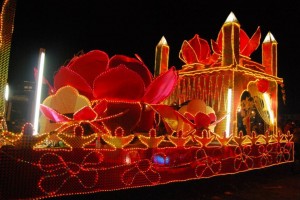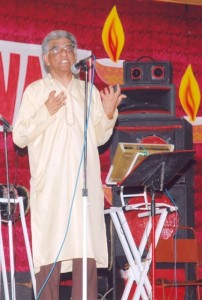
When Indian indentured servants arrived in what was then British Guiana, they brought their rich culture and ancient traditions, which have since been maintained among the subsequent generations who have made the territory, now independent Guyana, their home.
One of the most popular of these traditions has been the Diwali festival, known as the festival of lights, brought over by the Hindu indentured servants. The festival, also termed Deepavali, which means ‘a row of lights’, is now a public holiday and is celebrated on the 15th day of the Hindu calendar month of Kartik.
Initially celebrated here since indentured Indian workers arrived, within the dilapidated logies which once housed the labourers, simple mud or clay diyas were filled with ghee and lit by cotton wick to observe the religious occasion brought from the India motherland.
Then, on the eve of Diwali almost 40 years ago, a tradition among Guyanese began with the staging of the first Diwali motorcade where vehicle owners took to the streets, decorating their vehicles with lights, and where even decorated horse drawn carts made their way through the streets.

Founder of the event, the late Pandit Repu Daman Persaud, who was then president of the Guyana Hindu Dharmic Sabha, the cultural association formed in 1974 that organises the annual motorcades, saw the need for innovation in the festival to keep the tradition dynamic, and the event became a unique extravaganza in the Caribbean.
It would be the November 1991 motorcade that would see for the first time, the participation of five private companies, of which the Neal and Massey Group of Companies and Kayman Sankar Company took first and second prize respectively in the pick-up and truck category at the time.
Since then, the categories have been somewhat reclassified: large vehicles, which include low-bed trailers and trucks; small vehicles such as cars, pick-ups, vans etc, and the commercial category, which was recently included for companies. In addition, in 2008 a ‘best designer in the commercial category’ award was introduced, with Andrew Juman of Andrew Arts its inaugural winner.
Today, events begin a week before as the Guyana Hindu Dharmic Sabha presents motorcades throughout the country in Essequibo, Berbice and the final Georgetown/East Coast motorcade on the eve of Diwali.
The temporary additions to the vehicles, made of steel or bamboo, painted and covered with electrical lights (fairy lights), are gaily decorated in a theme of choice, which has grown to often include depictions of Hindu deities, and the lotus leaf in which sits a representation of Maha Lakshmi, an important deity of the festival

With increasing development both technologically and economically, the motorcades have each year proven more elaborate and spectacular than the last.
As thousands of Guyanese and tourists line the route or arrive at the LBI ground to view the floats, the event ends with the final Georgetown/East Coast motorcade and a remarkable cultural presentation at the LBI ground, a traditional site for what has become a colossal happening over the years.



